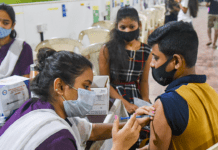The illness, which appears to be a variation of Hand, Foot, and Mouth Disease (HFMD), mostly affects kids under the age of ten. Kerala’s Kollam district was where the first case of tomato flu was discovered on May 6. No other region in India has reported the condition, with the exception of Kerala, Tamil Nadu, Haryana, and Odisha. The signs and symptoms of tomato flu or tomato fever disappear after a few days, indicating that it is a self-limiting viral illness. Not every case of tomato flu is associated with SARS-CoV-2 (Covid-19), monkeypox, dengue, or chikungunya.
Mild fever, low appetite, lethargy, and frequently a sore throat are the first symptoms. Small red spots start to appear one or two days after the fever starts, and they quickly develop into blisters and then ulcers. The tongue, gums, and inside of the cheeks, palms, and soles are the typical sites for the sores. Along with exhaustion, nausea, vomiting, diarrhea, fever, thirst, joint swelling, body aches, and typical influenza-like symptoms, the symptoms also include dehydration.
The advisory sent by the center says that there are no disease-specific drugs on the market for tomato flu. Adding that the recommended course of treatment is the same as for other viral infections i.e. isolation, rest, plenty of drinks, and hot water sponges to soothe itching and rashes.
The simplest approach to avoid getting the flu is to practice proper hygiene. Additionally, keep your surroundings tidy and sanitize them frequently. However, parents are urged to speak with a medical expert right away and seek the advice they need if they notice any symptoms in their children. The symptoms can all be treated as usual, but you must firmly refrain from tearing or scratching the blisters since this could make the symptoms worse.
The tomato flu has nothing to do with COVID-19, despite some symptoms being similar. These signs are typically present in other viral infections as well. It is uncommon in adults since their immune systems are often robust enough to protect them, and it is brought on by intestinal viruses.
Tomato flu and Monkeypox:
“Most people who get flu will recover in a few days to less than two weeks, but some people will develop complications (such as pneumonia) as a result of flu, some of which can be life-threatening and result in death. Monkeypox is usually a self-limited disease with symptoms lasting from 2 to 4 weeks. Severe cases can occur. In recent times, the case fatality ratio has been around 3–6%.” Explains Physician Dr. Balamurugan.
To tell them apart, Dr. Balamurugan explains, “Main symptoms include high fever, body ache, joint swelling, fatigue, rashes, and blisters. Initial symptoms of monkeypox include fever, body aches, fatigue, and sometimes enlarged lymph nodes. The disease can result in a rash that leads to red bumps on the skin that can appear on hands, feet, face, mouth, or even genitals.”
Tomato flu and coronavirus:
Similar signs of the tomato flu virus are shown in Covid-19. At first, these symptoms include fever, exhaustion, and bodily aches. Rashes on the skin are also reported by some Covid-19 patients. However, SARS-CoV-2 is unrelated to the virus that causes tomato fever. Tomato flu may not actually be a viral infection in children, but rather a complication of dengue or chikungunya fever.
These parameters must be kept in mind when trying to identify the symptoms, illness, and treatment. However, the best solution is to speak to a health professional as they can best diagnose which condition you might have.




